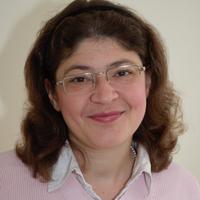During our recent honeymoon, my husband and I visited the West Bank and Bethlehem. As Christmas approaches, many of us remember Jesus Christ was born here 2,015 years ago in poor conditions – no nurses, midwives or doctors. Today, many Palestinian children are born in similarly difficult situations.
During our visit to Bethlehem we were particularly impressed by the Holy Family Hospital, a local maternity hospital run by the Order of Malta, one of the oldest Christian charities in the world. The hospital aims to provide high quality care for women and babies regardless of religion, ethnicity, nationality or socio-economic status. Indeed it seems to be the only place for local Palestinians to give birth in good medical care. Around half of the patients are from Bethlehem; the others are from surrounding areas. In the absence of a Palestinian national health care system, the hospital’s operating costs are covered by the Order of Malta. Costs for treatment are established after an assessment of socio-economic situation. Patients are asked to pay what they can afford and if they are very poor their charges are reduced or waived.
When we arrived at the hospital, we were given a tour of the hospital and wards. Our guide explained fertility rates in Palestine are rising. This development is mirrored in the monthly deliveries at the hospital:
|
|
1990 |
1995 |
2000 |
2005 |
2010 |
2015 |
|
Jan |
0 |
148 |
250 |
224 |
258 |
313 |
|
Feb |
4 |
130 |
239 |
221 |
221 |
264 |
|
Mar |
46 |
168 |
231 |
231 |
265 |
286 |
|
Apr |
68 |
180 |
274 |
240 |
298 |
277 |
|
May |
85 |
188 |
288 |
238 |
304 |
297 |
|
June |
85 |
202 |
294 |
258 |
333 |
311 |
|
July |
84 |
188 |
329 |
235 |
307 |
379 |
|
Aug |
71 |
199 |
309 |
235 |
286 |
351 |
|
Sept |
109 |
167 |
275 |
234 |
295 |
327 |
|
Oct |
116 |
193 |
223 |
257 |
270 |
|
|
Nov |
97 |
203 |
165 |
213 |
237 |
|
|
Dec |
104 |
198 |
175 |
207 |
236 |
|
|
Total |
869 |
2164 |
3052 |
2793 |
3310 |
2478 |
[ Source: Holy Family Hospital Bethlehem, Newsletter Volume 16, issue 9 ]
Of course, this needs to be understood in the context of local, regional and national developments. The table starts with zero birth rates in 1990, when the hospital´s 28 bed maternity unit was opened. After that, fertility rates rose until the start of the second Intifada in September 2000. The Intifada Al Asqa was sparked by Ariel Sharon´s visit to the Temple Mount which Palestinians found provocative. The following years were marked by violent clashes between Israel Defence Forces and Palestinian militants. For example, from 2 April to 10 May 2002 (38 days), the Church of the Nativity in Bethlehem – marking where Jesus was born – was under siege. Soldiers from the Israeli Defence Forces (IDF) surrounded the church while priests, Palestinian civilians and militants stayed inside. Israeli snipers killed 8 Palestinian militants inside the church and wounded more than 40 people. During this crisis internal movements at the West Bank were strongly controlled. Palestinian women hesitated to give birth at the hospital for fear they might not pass control points and security checks. The hospital encouraged local women to come and give birth by reducing fees. Indeed, this economic incentive helped to raise the numbers of deliveries. The Intifada stopped with the death of Yasser Arafat in 2004. In the table we see births have risen constantly since 2005, which reflects the politicization of fertility in Israel and at the West Bank. Rhoda Kanaaneh explains the link between pro-natal policies and nationalism in the Palestinian-Israeli conflict in her book ‘Birthing the Nations: Strategies of Palestinian Women in Israel’ (2002). While some believe higher birth rates lead to a stronger nation, others argue a reduction of fertility rates may enable families to invest in the education of their children. By this view, a smaller, better educated youth will support the nation more than masses of poorly educated young (Kanaaneh 2002: 62). Clearly, fertility is highly politicized in both Israel and Palestine to this day. In this context it is important women have a choice to give birth and receive information at neutral places, like the Holy Family Hospital in Bethlehem. By September 2015, 66,232 babies had been born in the same Holy Family Hospital. According to some observers, birth rates are also rising among Palestinian diaspora communities in Latin American countries like Chile and Argentina, but it remains unclear whether or not there exists a relationship between these demographic developments among Palestinian communities at different locations.
About the Author:
Dr Pia Jolliffe is a Collen Visiting Fellow at the Oxford Institute of Population Ageing.
Opinions of the blogger is their own and not endorsed by the Institute
Comments Welcome: We welcome your comments on this or any of the Institute's blog posts. Please feel free to email comments to be posted on your behalf to administrator@ageing.ox.ac.uk or use the Disqus facility linked below.













